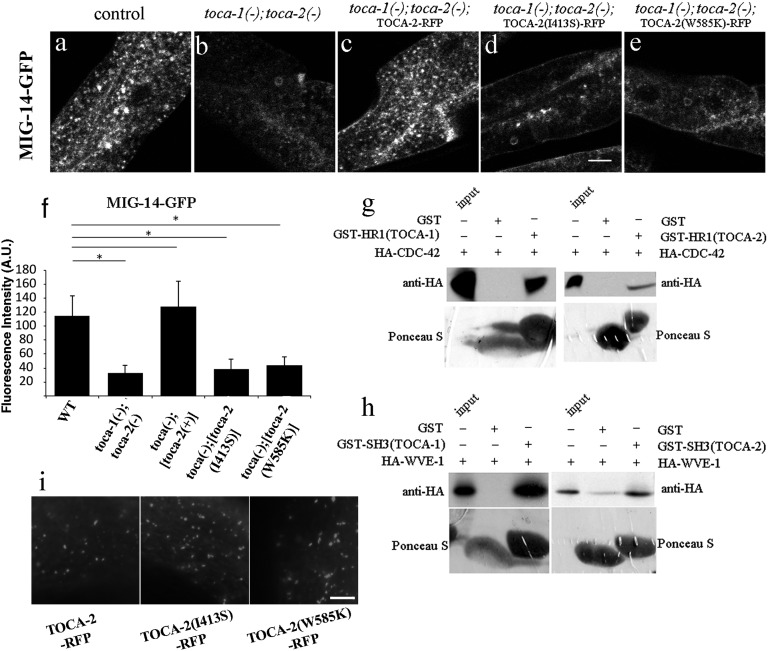Fig. 2.
TOCA-2 requires both SH3 and HR1 domains for its function in retrograde transport. (A–E) Confocal images of intestine-specific expression of GFP-tagged MIG-14/Wls acquired in intact living animals. Wild-type control, or toca-1; toca-2 double mutants, are shown, with or without intestine-specific re-expression of GFP-tagged TOCA-2(+),TOCA-2(I413S) HR1 domain mutant, or TOCA-2(W585K) SH3 domain mutant. Note the loss of MIG-14-GFP in toca-1(tm2056); toca-2(ng11) double mutants (B) and the restoration of MIG-14-GFP levels upon intestine-specific expression of wild-type TOCA-2 (C). MIG-14-GFP levels were not restored upon expression of TOCA-2(I413S) or TOCA-2(W585K) mutants (D and E). (Scale bar, 10 µm.) (F) Quantification of average integrated puncta intensity is shown. Error bars in F represent SEM. A.U., arbitrary units. *P < 0.001. (G and H) In vitro translated HA-tagged proteins, CDC-42(G12V) or WVE-1, were incubated with immobilized recombinant proteins, GST-only, GST-HR1 domain of TOCA-1 or TOCA-2 (G), or GST-SH3 domain of TOCA-1 or TOCA-2 (H). After washing, bound proteins were eluted by boiling and analyzed by Western blot with anti-HA antibody. Input lanes represent 20% of the original HA-tagged proteins. (Lower) Total GST-fusion bait proteins visualized by Ponceau S staining before antibody probing. (I) Micrographs of TOCA-2-tagRFP wild-type and mutant forms expressed in the C. elegans intestine. (Scale bar: 10 μm.)

